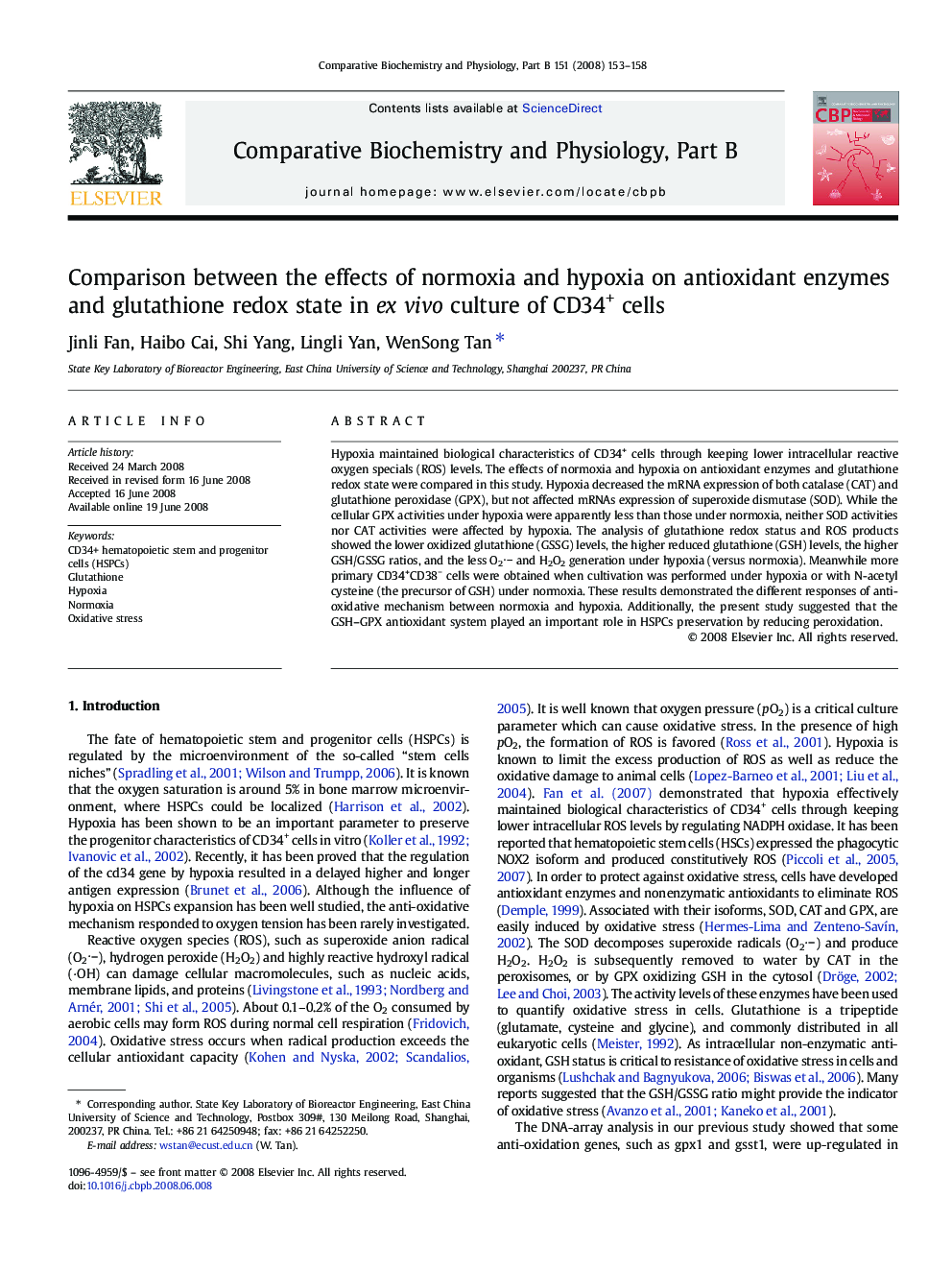| Article ID | Journal | Published Year | Pages | File Type |
|---|---|---|---|---|
| 1976653 | Comparative Biochemistry and Physiology Part B: Biochemistry and Molecular Biology | 2008 | 6 Pages |
Hypoxia maintained biological characteristics of CD34+ cells through keeping lower intracellular reactive oxygen specials (ROS) levels. The effects of normoxia and hypoxia on antioxidant enzymes and glutathione redox state were compared in this study. Hypoxia decreased the mRNA expression of both catalase (CAT) and glutathione peroxidase (GPX), but not affected mRNAs expression of superoxide dismutase (SOD). While the cellular GPX activities under hypoxia were apparently less than those under normoxia, neither SOD activities nor CAT activities were affected by hypoxia. The analysis of glutathione redox status and ROS products showed the lower oxidized glutathione (GSSG) levels, the higher reduced glutathione (GSH) levels, the higher GSH/GSSG ratios, and the less O2− and H2O2 generation under hypoxia (versus normoxia). Meanwhile more primary CD34+CD38− cells were obtained when cultivation was performed under hypoxia or with N-acetyl cysteine (the precursor of GSH) under normoxia. These results demonstrated the different responses of anti-oxidative mechanism between normoxia and hypoxia. Additionally, the present study suggested that the GSH–GPX antioxidant system played an important role in HSPCs preservation by reducing peroxidation.
